daCi USA Newsletter
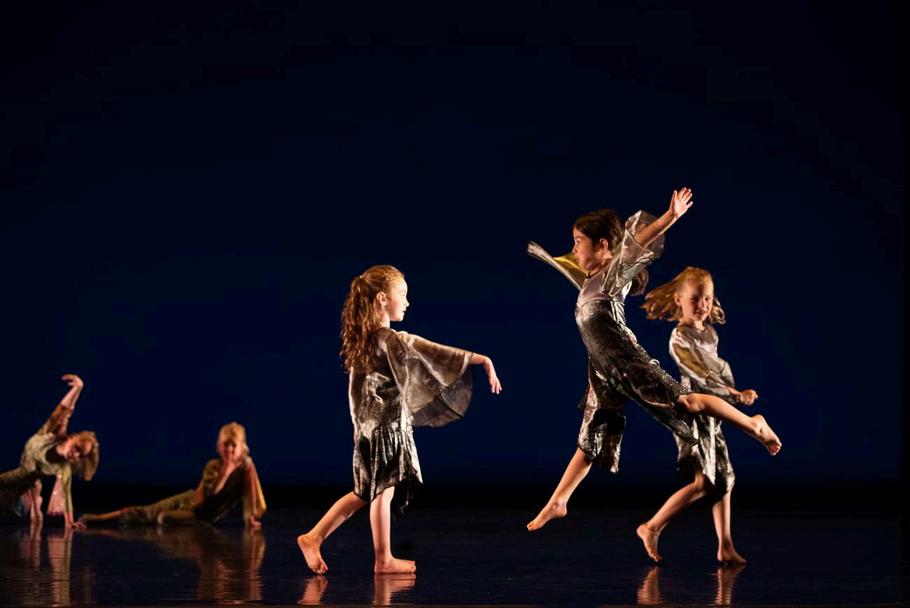
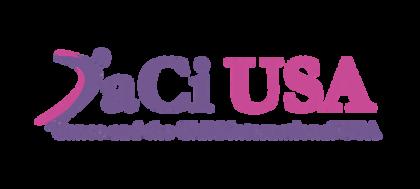
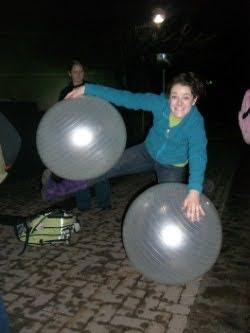




leadership last month. The ball is picking up steam and only getting hotter as we’ve announced the official date and location for our 8th National Gathering in Towson, Maryland in 2026.
“Keep the ball rolling” is a metaphor that would make a great title for a dance, don’t you think?! It certainly inspires my kinesthetic senses and makes me want to move. I keep this phrase in mind when making decisions at home, in the office, in my community work and in my dance life It reminds me to take inventory of the energy around me so I can leverage the momentum. I look for where it is circling, how I can join in for the ride, and what I can add to the developing motion and avoid tripping up or re-inventing the already steady wheel
The image of the rolling ball represents where energy is sustained, where stewards of the ball are committed, where partners feel accelerated progress from their combined and continuous effort It is synergy!
daCi USA’s ball has been rolling all year. The ball was already rolling from the national gathering in Michigan last summer, and the energy continued with the kick-off to a new season in the Youth Leadership program at the top of the new year. It gathered momentum as it rolled into the international daCi gathering in Slovenia, then cruised confidently to our virtual day of dance hosted by our own youth
Here are a few ideas to keep the ball rolling. Invite your colleagues to become members of daCi. Anyone who joins from now until the end of the year will get membership through December 2025.
Host a daCi Day of Dance in your area. Apply for seed money to help you with your planning. These events are a great way to grow energy for the National Gathering. Contribute to future newsletters Our collective pool of wisdom is a treasure and we need to document and share it to strengthen our connections and make this membership benefit visible.
I hope you feel supported by daCi I hope you see how your personal efforts to support the right of every child and person to dance contribute to the ball of energy found within this organization. The core of our ball is a belief in children, and our belief is hot! We’re a fireball!
Thank you for being a part of the reason our ball is moving. Thank you for contributing your passion for dance, your membership, and your attention to our cause. It is a pleasure to roll with you and I look forward to what we find on the journey as we continue to 2025.
Heather Francis Chair, daCi USA
Greetings daCi members,
This past July I had the privilege of attending the international daCi conference in Ljubljana, Slovenia. Things I was amazed by: The quality of the youth performances; the elemental drive people have to move; how dance can supersede the need for verbal language (along with how fluent the rest of the world is in English). Among the chief delights of the conference was the opportunity to share a focus on dance with people from all around the world who value dance. The experience reinforced for me that dance education, centered around children, has strong and passionate adherents all over the globe. We are in good company!
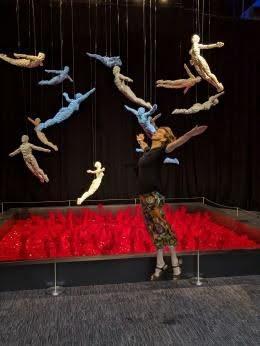
This issue includes news from the daCi-sphere plus insights on dancing from the inside out from Utah member Cally Flox; a new installment of the SEL Corner by Rachel Swenson; a spotlight on a new member from Delaware who has moved into public arts policy; lesson plans about emotions and balance from Maryland and Seattle; and the Recommendation Zone, with its array of interesting and nifty leads. Many thanks to all who contributed, and especially to Rachel Repinz who worked on the visual design.
In Ljubljana all of the performances ended with the emcee offering this iconic quotation from choreographer Pina Bausch: “Dance, dance, otherwise we are lost.“ Here’s to not feeling lost –and to dancing and teaching and finding others who share our passion. daCi is good for that.
Cheers,
Mady Cantor Editor
by Cally Flox
Are you awake and alive in your body? Do you greet your body daily with joyful appreciation? Do you listen to what your body is telling you and respond to it? Do you care for it attentively?
As a dance teacher, I shared these questions with others regularly, hoping to inspire their love and appreciation for their bodies. My technique classes were filled with expressions of gratitude for our ability to move. We thanked our bones, muscles, nervous system, organs, and our minds I taught that the body is the primary instrument for living and that through it we both become and express who we are. As dancers, we know that movement is life and that the world needs what dancers know.
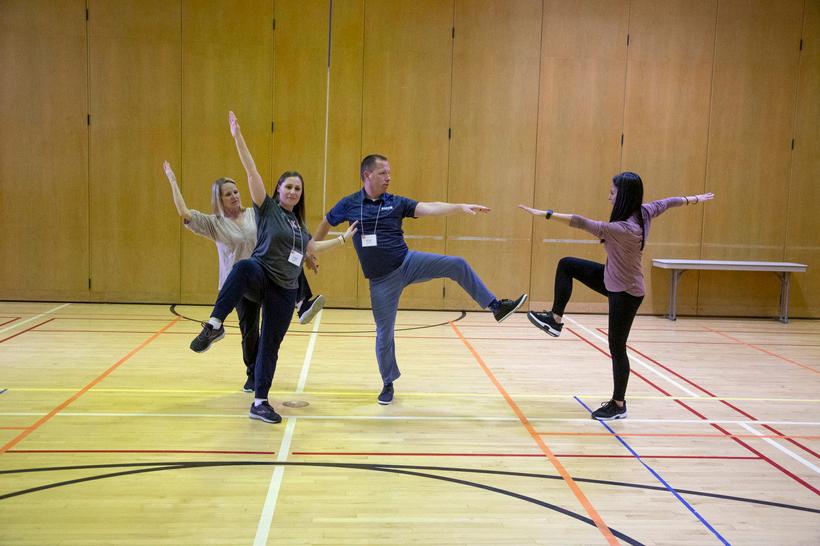
At the BYU ARTS Partnership, where I am director, we provide professional development in the arts and arts integration to 1,000+ teachers per year from across the curriculum and have introduced them to the wisdom of the body and taught the value of embodied learning
My understanding of these principles deepened when I experienced a near-fatal experience with hypothermia. After a long swim in a high mountain lake in the Canadian Rockies, I sat on the dock waiting for my body to recover, only to succumb to an extreme headache and an inability to move, think, and make decisions. I felt suspended in a bubble outside of time. I wanted to go to sleep so the pain would stop. Luckily, I started vomiting as my internal organs sought to preserve life, attracting the attention of a man who recognized my symptoms as hypothermia The warmth of blankets, the car heater, and the warm lodge did not penetrate the level of cold. It was not until blankets warmed by the fire were placed directly on my skin that I began to recover. It took 15 minutes to get warm enough to shiver and another half hour for those shivers to warm my body into recovery.
At the time, the realization that my body was a hair's breadth away from death was stunning: I didn’t even know I was cold. I considered the many times in my life that I put my head down and continued swimming through challenges that overwhelmed me and realized parts of myself were still numb I began to make comparisons of physical hypothermia to emotional and mental hypothermia that come from exhaustion, demoralization, burnout, and trauma. Trauma is stored in the body. Like hypothermia victims, “Trauma victims cannot recover until they befriend the sensations in their bodies.” (The Body Keeps the Score, Bessel van der Kolk, p.102.)
Coming out of hypothermia, I was aware of the sensation of warmth in my body as if for the first time. The experience left me with insight into the importance of receiving warmth in strategic continual doses for our emotional, mental, and physical well being. My teaching evolved to include more specific questions that activate internal awareness, or interoception, and instill habits of positive thinking and self-reflection helping my students ignite their own internal sense of warmth. I added questions about personal aesthetic preferences. How do things make you feel? What do you like or dislike? Aesthetics is the branch of philosophy that addresses the question, what is beauty? Beauty awakens us, making aesthetics the opposite of anesthetic or numbness Additional questions include: How do you most enjoy moving? What type of movement do you enjoy watching? What do you consider beautiful?
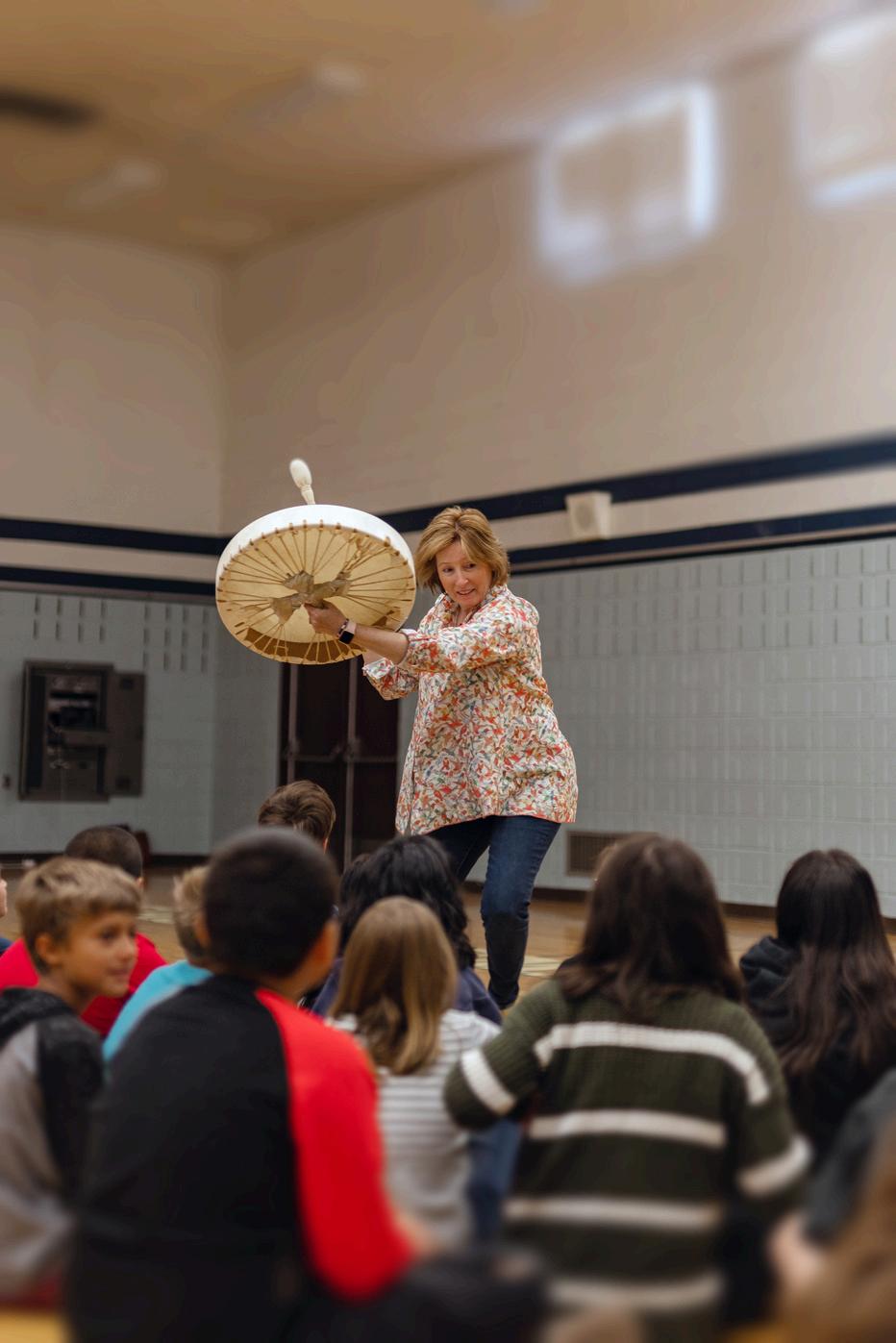
Dance class is a special opportunity to activate the internal landscape of emotional and sensory regulation in the body, along with the physical prowess of refined movement When we are in survival mode, parts of our body, mind, and emotions can become numb without us even realizing it. The antidote that reawakens our sense of being alive is the felt sense of attending to the physical sensations in our bodies. Taking time to awaken the body through the many senses with a variety of nourishing sensory stimuli and related imagery increases selfawareness and improves self-regulation. Begin with the traditional senses: sight, hearing, touch, taste, and smell. Include body senses: balance, proprioception, kinesthesia, and the internal awareness of interoception.
Teachers can ask students these three reflective questions to unite the mind and body for learning before, during, and after specific instructional activities.
What do you see? This brings attention to the current surroundings, inviting students into the present moment, and can include awareness of their own body in the space. What do you sense? Add specific prompts such as, “What do you hear? Taste? Feel on your skin? What do you smell? What color or texture is in your stomach? Can you balance on one foot? What sensations do you notice as you move through space? Where in your body do you feel the drum beat? What sensations do you notice in your shoulders, hips, or other body parts? What color or texture do you sense in your stomach?”
What do you feel? Emotions are instantaneous, often unconscious. “Feelings are the perception of what the body is experiencing during an emotion.” (Your Brain on Art, Magsamen & Ross, p. 31) Sample questions include: “How do you feel doing this movement? What makes you feel safe? Happy? Inspired? What do you sense internally?
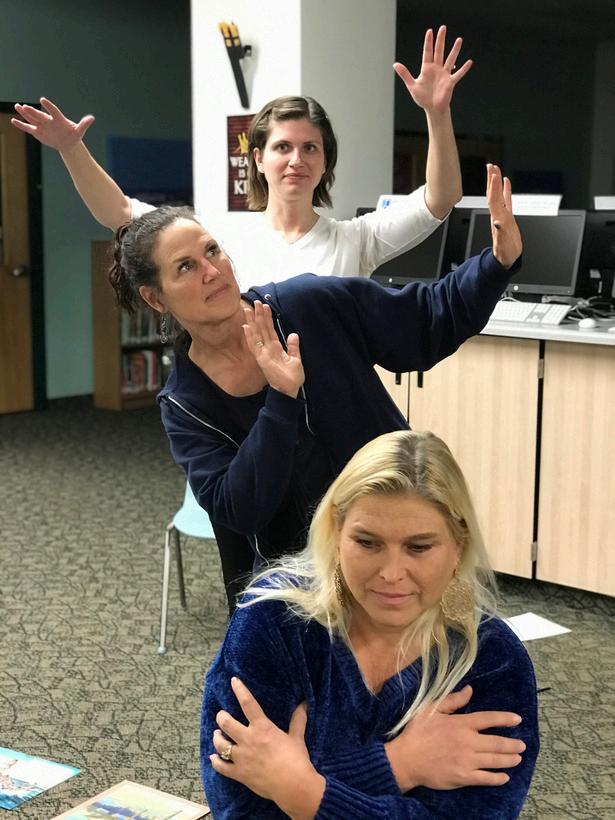
In The Power of Myth, multi-disciplinary mythologist Joseph Campbell wrote:
People say that what we are all seeking is a meaning for life. I don’t think that’s what people are really seeking. I think that what we are seeking is an experience of being alive, so that our life experiences on the purely physical plane will have resonances with our own innermost being and reality, so that we actually feel the rapture of being alive
In her thesis, The Embodied Experience of Adult Educators, Heather Francis, researcher in arts education, describes that bodily knowing is a valid source of knowledge for educators.
When educators learn more about the existence and nature of a felt sense and their own felt sense, they can learn how their perception and knowing are formed through the body in the present. They can develop greater confidence in leveraging their knowledge, which is known to them before words are assigned to them, but that exists in the body and is present when needed. (Francis 2024, p. 107)
Francis goes on to recommend that we “emphasize the importance of developing healthy physical habits, understanding nuances surrounding bodily knowledge, and recognizing the felt sense to enhance instructional effectiveness. By embracing these insights, educators can deepen their practice by considering where they are leveraging or ignoring the embodied aspects of their work (Francis 2024, p. 108)
Teachers can model and describe for students how they reflect on their own authentic experiences, listen to themselves, and honor their intuition and instincts as well as listen deeply when students do the same.
Both visual and performing arts engage us physically, cognitively, mentally, socially, emotionally, and spiritually. This holds true when we are creating our own works or witnessing the works of others. Our brain and bodies are inextricably unified and require consistent doses of emotional inspiration to drive our movement.
“People are not thinking beings who feel….. but feeling beings who think ” (Your Brain on Art, Magsamen and Ross, p. 29) As dancers, we think to move and we move to think. By awakening internal sensations and feelings, we can help our students dance meaningfully, stay present through the myriad challenges of life, and live from the inside out.
For a dance example of “I see, I sense, I feel,” watch the keynote address Thinking: A Whole Body Experience, presented at the Arts Express Summer Conference 2024 by Cally Flox and Erik Stern, Kennedy Center Teaching Artist, choreographer, and faculty member at Weber State University
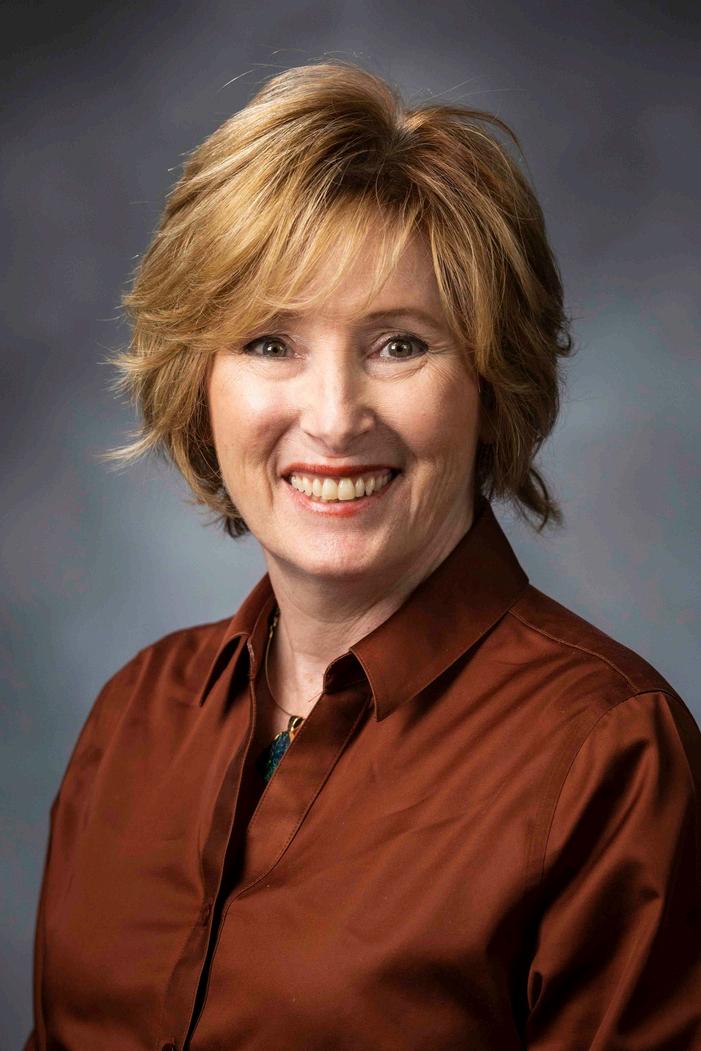
Cally Flox is the lead author of A Teacher's Guide to Resilience Through the Arts and the Founding Director of the BYU ARTS Partnership, which provides professional development for educators to improve student learning and school culture through the arts and arts integration She is a creative development specialist and a licensed administrator and teacher in dance, PE, and math In her free time she enjoys the outdoors, reading, travel and her grandchildren
by Rachel Swenson
Editor’s note: This is the fourth offering in our SEL series. daCi member Rachel Swenson has been researching SEL as a doctoral candidate at Teachers College and uses it as a pedagogical framework in her work as a dance educator in Idaho. Each column focuses on one of the five domains in SEL. 1
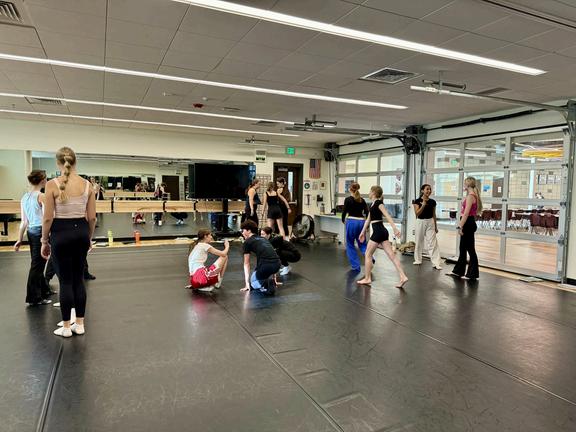
develop technique, strength, flexibility, musicality, creativity, expression, and solo and ensemble work. Dancers learn the importance of routine and dedication. Dancers must focus on precise movement, timing, spacing, and coordination, which develop keen attention to detail. Dance also builds both physical endurance and mental resilience. Dancers regularly set and achieve goals in the dance classroom and learn to balance dance commitments with other responsibilities like school, family, friends, and work. This balancing act requires time management and priority-setting. In addition, dance teachers emphasize and model the importance of listening, following directions, collaborating, and fostering a respectful and disciplined environment Through these practices, dance teachers naturally instill a strong sense of discipline in their students
Another word for discipline is self-management, one of the five social and emotional learning domains Social and Emotional Learning (SEL) is the “process through which all young people and adults acquire and apply the knowledge, skills, and attitudes to develop healthy identities, manage emotions and achieve personal and collective goals, feel and show empathy for others, establish and maintain supportive relationships, and make responsible and caring decisions.”1 The five social and emotional competency domains are self-awareness, social awareness, relationship skills, responsible decision-making, and….. self-management skills.
What are self-management skills, exactly? The Collaborative for Academic, Social, and Emotional Learning (CASEL), a leading organization in the field, defines selfmanagement skills as “the abilities to manage one’s emotions, thoughts, and behaviors effectively in different situations and to achieve goals and aspirations.”2 This incorporates the ability to delay gratification, manage stress, and cultivate motivation and a sense of agency to achieve personal and shared goals.
Guiding students in developing these skills is a particular strength of dance teachers. What specific self-management skills are students learning in our dance classes?
During my research, 44 adolescent dance students in grades 6 – 12 were asked to identify some key self-management skills they learned in dance class The following self-management themes emerged from these reflections,
and when to rest and recover.
One key skill I have learned is hard work and endurance, both mentally and physically.
I have learned through dance is to be mentally and physically prepared to be able to take on any task fully.
Dance has taught me that in self-management, you need to know when your body needs rest and when to slow down.
A key skill that dance has given me is the ability to continue pushing through something that is hard. Just because I can’t do something at the moment doesn’t mean I can’t do it.
Dance gives me practice in having a better focus and making me more aware of my organizational skills.
Dance has taught me to always be on time and prepared.
Dance has taught me to listen, work hard in the classroom, and always pay attention because sometimes, one small correction can do the most.
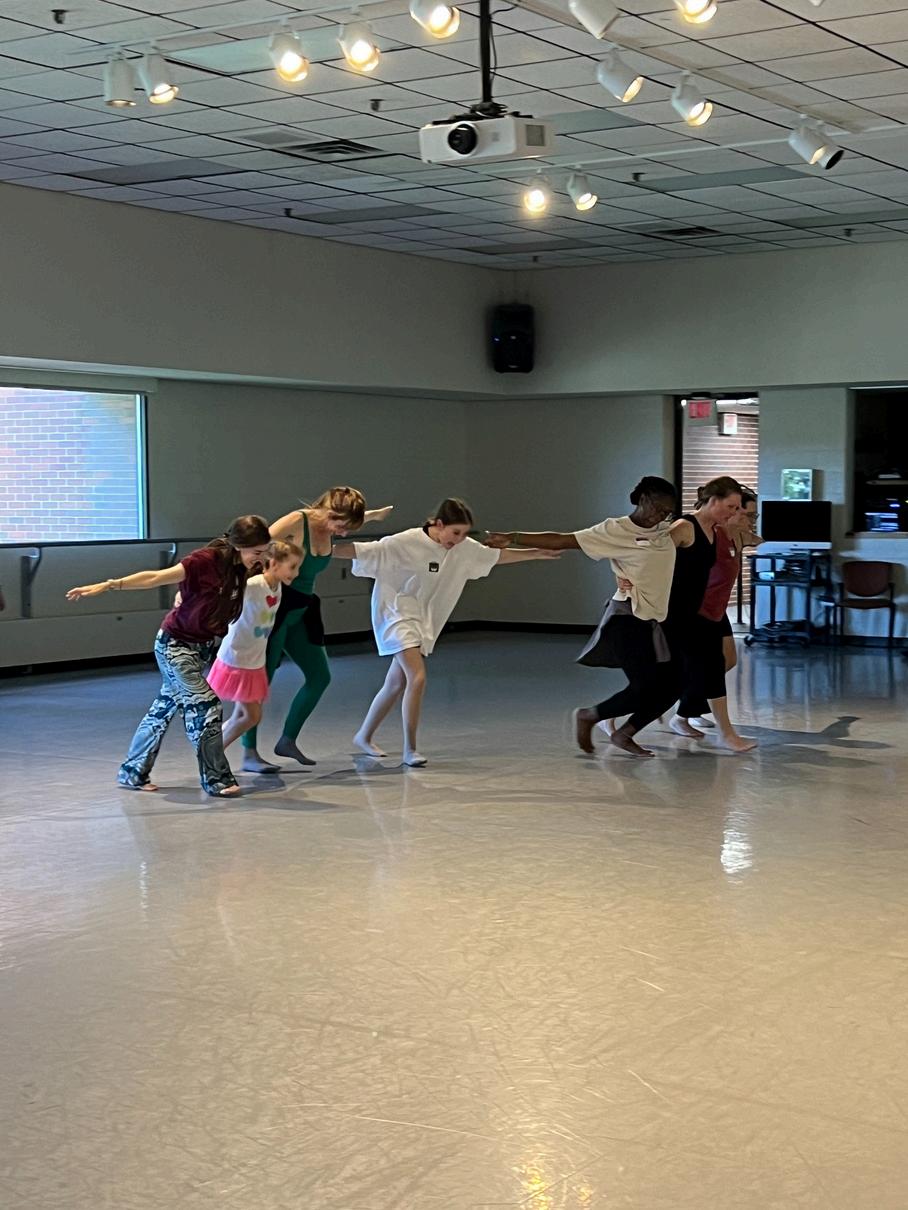
Dance has taught me patience, discipline, and creating goals for myself.
Dance has taught me about self-management by knowing how to be on top of things and knowing deadlines
To stay calm and collected and not be scared.
A key takeaway in the dance classroom is building confidence but staying humble and always growing
Dancers lead busy lives, and I often worry about my students’ abilities to balance dance, school, work, and life effectively. To help them develop strong time-management skills, I provide a timemanagement worksheet, which they complete at the beginning of the school year. This worksheet encourages students to track how they spend each day, emphasizing the importance of adequate sleep, rest, family and friend time, spiritual time, dance practice, and school study time. I have found this tool beneficial for dance students who need to be more disciplined in practicing outside of class and for those who struggle to give sufficient time for rest and school study. The worksheet offers a visual overview of how they spend their time, highlighting areas that require better time management to achieve their goals.
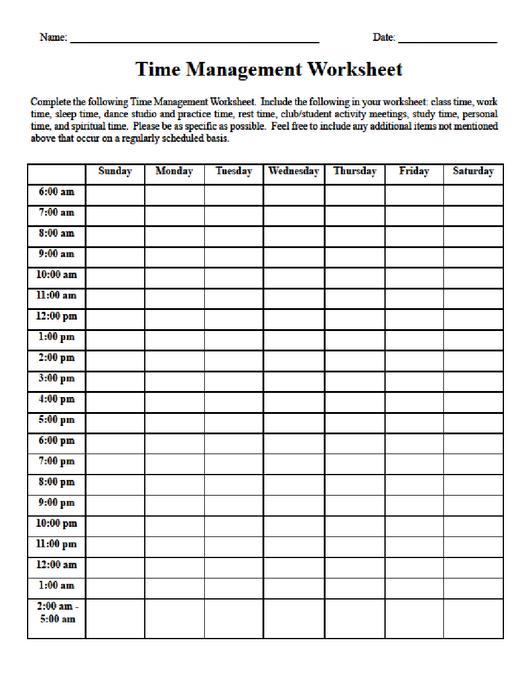
Explicitly teaching and modeling self-management skills in the dance classroom benefits the students, teachers, and overall dance studio environment. Developing SEL self-management skills extends far beyond the dance studio, equipping students to be resilient and successful in setting and achieving goals Allowing time for students to reflect on and discuss self-management not only highlights the importance of these skills but also enhances selfawareness and social awareness, which are essential foundations for developing effective selfmanagement.
What is the Casel Framework?. CASEL. (2024a, September 2). https://casel.org/fundamentals- ofsel/what-is-the-casel-framework/ 1. What is the Casel Framework?. CASEL. (2024b, September 2). https://casel.org/fundamentals-ofsel/what-is-the-casel-framework/#self-management 2.
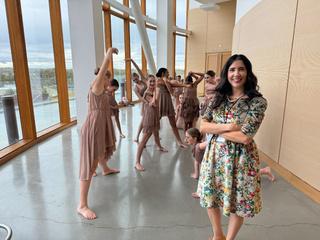
Rachel Swenson is a dance specialist at Idaho Fine Arts Academy and a dance teaching artist for the Idaho Commission of the Arts and the Utah Arts Council She is pursuing an Interdisciplinary specialization as a doctoral candidate in the Ed D Dance Education Program at Teachers College, Columbia University. Her research interests include social-emotional learning, social and decision-making processes in collaborative choreography, and cognitive processes in creativity, among others.

by Chara Huckins
A T Moffett is from Kentucky where she grew up on a corn, soy bean, and tobacco farm She started dancing at age three at a small dance studio because her grandmother thought that dance would help her be more self-confident. She continued to dance all through school. Her inspiring dance teacher, Melanie Asriel, took her on a memorable trip to Chicago, which was her first experience of a big city.
She attended Radford University in Virginia where she studied dance and communication. After graduating she danced professionally for five years in New York and Philadelphia. Her best jobs during this time? Performing with choreographers Myra Bazell in Philly and Stephan Koplowitz in NYC. Her worst job? Dancing in a bar.
A T then decided to go graduate school at the University of Oregon to pursue an MFA in Dance She was interested in teaching in higher education and taught dance at Winona State University, and at the University of Delaware for several years alongside daCi member Dr. Lynette Overby. From 2017 to 2020 she directed the dance minor program at Washington College.
A number of interesting dance projects came her way. A.T. took part in Dr. Overby’s project “Same Story, Different Country” which looked at racism in the US and South Africa. The group performed in Delaware and then took the work on tour in South Africa, performing at Nelson Mandela’s church, the Oprah Winfrey Leadership Academy for Girls, and the University of Cape Town A T said it was a lifechanging experience
A T received a choreographic fellowship from the Delaware Division of the Arts and choreographed Re-Entry, a multidisciplinary production and collaboration between veteran literary artists and civilian dance artists. This piece focused on the civilian/military divide. It was created in partnership with Washington College’s Star Center for the Study of American Experience, which houses an oral history collection from the American home front during WWII.
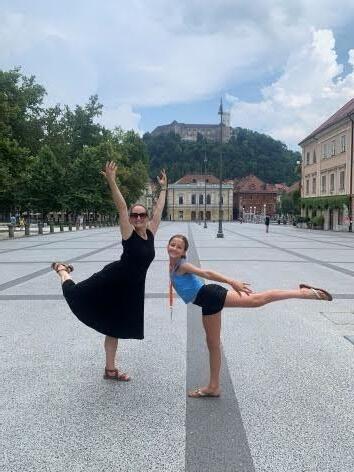
During the pandemic, A.T.’s job at Washington College changed from full-time to part-time and she decided that was not sustainable. She returned to graduate school at the University of Delaware to get a master’s degree in Urban Affairs & Public Policy with a focus on arts and aging. Delaware has a significant percentage of retirees, and policies and programs that support aging in place are a high priority. A.T. looked specifically at arts and cultural policy within those programs. Her master’s thesis was a deep dive into a statewide pilot program in public libraries called Creative Aging She studied the impact of these programs on participants’ social quality of life, engagement, and sense of mastery.
After finishing the degree, A.T. took the position of Executive Director with the Delaware Institute for Arts & Education, a non-profit organization based in Wilmington that provides arts-based programs in schools and early childhood centers across the state.
Even in her new job A.T. continues to find time to dance. She is currently taking a class in Umfundalai technique. She serves on the board of the Delaware Dance Education Organization. When she is not working or dancing you might find her at her 11-year-old twins’ soccer games On the rare occasions when she has free time she loves to read, swim, and be in nature with her family.
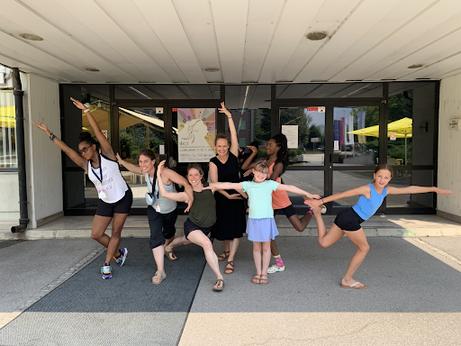
For some years A.T. had heard about daCi from Lynette Overby, her colleague at the University of Delaware. Finally, the timing was right and she attended the international daCi conference this year in Slovenia, along with her daughter Simone. A.T. appreciated how the conference was organized so that participants were able to experience dance in diverse parts of Ljubljana. She said she was able to get a real sense of the place and the rich cultural offerings of the city.
As an arts education nonprofit leader, it was eyeopening for A T to see the collaboration of daCi with various school partners as well as government leaders. She particularly appreciated hearing from the Slovenian Minister of Culture and the Minister of Education. She was able to connect with newfound colleagues from around the world and learn how they build support for their programs. The conference, A.T. said, was “heart and mind-expanding.”
Karen Campbell Kuebler (EdD, MA, BFA) loves sharing her passion for dance with children through adults She teaches dance integration in Baltimore elementary schools Karen returned to Towson University in 2009 and specializes in dance history and education From 2022 to 2024, Karen served as the graduate director of the Interdisciplinary Arts program Karen presents her energetic workshops in local to international venues. In 2018, Karen presented two interdisciplinary workshops combining French and Dance in Martinique. Karen is a founding board member of the Maryland Dance Education Association (MDEA) and is excited to serve on the daCi board (kkcdanser@verizon net)
Intended age: 4–6-year-olds
Length of class: 30 minutes
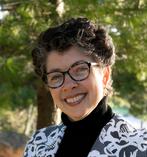
This is a good lesson for the beginning of the year to ignite personal expression and fun in the dance classroom. It invites primary students to engage with a familiar song and dance but takes the exploration a step further by adding variations.
Lesson objective: Identify some emotions by singing and dancing, to make connections between brain and body.
Procedure:
The teacher sings and dances the song modeling the facial expressions as well as the movements of each stanza. Students follow along.
After completing the song and dance two times, invite the students to offer an emotion/feeling word and an action to accompany it Have the entire class sing and dance the student-suggested emotions Divide students into groups of three to five Each group will create their own Emotions Dance with a minimum of three different emotions with actions. Students must do three and may do more. Each group performs their Emotions Dance.
Basic song:
If you’re HAPPY and you know it, CLAP your hands. 2X
If you’re HAPPY and you know it, then your face and body will show it.
If you’re HAPPY and you know it, CLAP your hands.
Variations examples:
If you’re SAD and you know it, SLUMP DOWN LOW…..
If you’re SILLY and you know it, JUMP AROUND…..
If you’re ANGRY and you know it, STOMP your feet….
If you’re SHY and you know it, HIDE your face….
If you’re SURPRISED and you know it, STRETCH up high…..
If you’re SLEEPY and you know it, lay down low and CLOSE your eyes…..
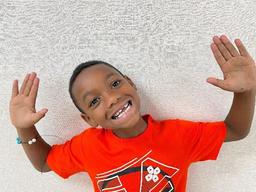
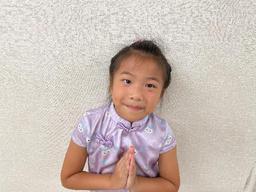
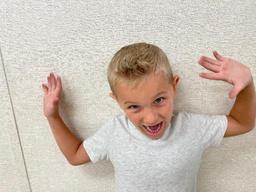

Anna Mansbridge taught classes for all ages at the Creative Dance Center for 25 years, training under Anne Green Gilbert in her groundbreaking pedagogy Brain-Compatible Dance Education. She is also active as an expert in Renaissance and Baroque dance, and will be the Assistant Stage Director for Boston Early Music Festival’s chamber opera “Don Quichotte” by Georg Philipp Telemann, with performances in Boston and New York in December 2024.
Age range: all
Length of class: 1.5 hours

(BCDE pg. 65) Teacher-directed BrainDance: Standing in a circle, and integrating the concept of Balance, move through the eight patterns: Breathe, Tactile, Core-Distal, Head-Tail, Upper-Lower, Body-Side, Cross-Lateral, Vestibular Suggested music: Eric Chappelle, BrainDance Music, #7, “Atlas”
(BCDE pg. 115) Student-centered
Find a partner and decide who is Leader 1, and who is Leader 2. Balance a chopstick between the palms of one hand each (A Music). See how you can move in self-space or general space balancing the chopstick. When the music changes (B Music), Leader 1 holds the chopstick and makes a balance shape. Leader 2 copies the shape. Leader 1 makes another shape, perhaps on a different level or body parts, and Leader 2 copies. Continue until the music changes back to the A music, then balance the chopstick between the palms again, this time with Leader 2 leading. Continue until the end of the music.
Suggested music: Music for Creative Dance by Eric Chappelle: Vol III #11, “I Say, You Say”
Reflection: Which did you find the most challenging – balancing the chopstick between the palms, or copying your partner’s shapes? Show your partner a balancing shape you remember.
(BCDE pg 132) Student-centered
In groups of 3, decide who will be the table, the vase and the mover Dancer 1 makes a steady “table’ shape at middle or low level. Dancer 2 makes a balancing ‘vase’ shape connecting one or two body parts to the ‘table.’ Dancer 3 explores the shape (over, under, around and through, on and off-balance) then gently taps the ‘table,’ who rolls away. The ‘vase’ holds the balancing shape (this is the illusion- the ’vase’ does not really need the ‘table’ to balance). Then the ‘vase’ becomes the table, the ‘table’ becomes the mover, and the mover becomes the ‘vase.’
Suggested music: Peter Jones, Three Characters, no 4.
Reflection: hold the final balancing shape and everyone look around at the different trios. If you like being the ‘table’ best, sit down. If you liked being the “vase’ the best, stand on one leg. If you like being the “explorer’ the best, make a wide shape.
(BCDE pg. 177) Teacher-directed Face another person in a circle; one has their back to the circle, the other with their back facing out. Hold both hands.
Touch heel, toe, heel, toe to the side (inside person right foot, outside person left foot), then four slides sideways round in the circle. Repeat with the other foot.
Clap right hands together three times, clap left hands together three times, clap both hands together three times, then clap thighs three times.
Right elbows once around with partner back to place, look to the left, and face a new partner. Suggested music: The Best of the Shenanigans, Vol. 2, “Brown Jug Polka.”
(BCDE pg. 211) Student-centered
In groups, the dancers will create a short choreography using the poem as inspiration. They can use this poem, or make parts of it up themselves.
Noun
Adjective, Adjective
Verb, Verb, Verb Short Sentence
Noun or Synonym
Balance
On-Balance, Off-Balance Reaching, Tipping, Turning We Imagine and Improvise Together daCi
Invite the groups to share their dances. They can choose to have chance music, or no music, or read the poem, or just say key words. Invite groups to give feedback using the four “A’s” Attend, Allow, Applaud, Appreciate. Suggested music: Selections by Christopher Benstead, Zoë Keating, Nomad, Bobby McFerrin, Peter Jones, Andy Monroe.
Closure Circle: All say and do “on and off-balance.” Turn to someone on one side of you, and then the other, and thank them for their wonderful dancing ☺.
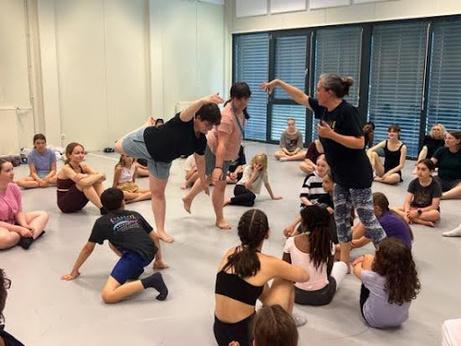
References:
Brain-Compatible Dance Education (BCDE), 2nd ed. Anne Green Gilbert. Champaign, IL: Human Kinetics, 2019 BrainDance Music. Eric Chappelle and Anne Green Gilbert. Amazon, iTunes Music for Creative Dance Volumes 1-5 Eric Chappelle and Anne Green Gilbert Amazon, iTunes
The daCi Youth Leaders have been meeting regularly in this 4th season of service with two main focal points: the Virtual Day of Dance and a daCi Youth Leadership Handbook.
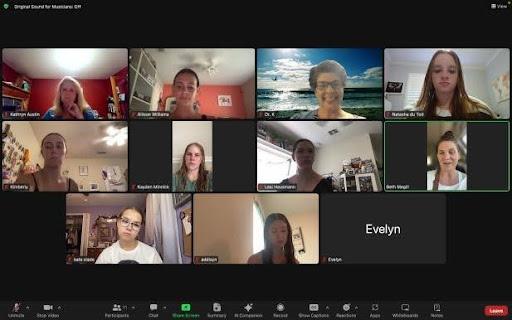
This season's theme is "Passing the Torch: Creating Systems / Learning to Delegate." Two of our veteran youth leaders have taken the helm with these projects. Natasha du Toit is spearheading the creation of a daCi Youth Leadership Handbook and has resourced a team of Youth Leaders to help with the content and design as well as receiving guidance from a SpringBoard member from daCi International. Allison Williams took the Chair role for the Virtual Day of Dance on September 21, when daCi members and their students met on Zoom to dance together in celebration of the National Day of Dance!
Additionally, we have welcomed Karen Kuebler onto our mentoring team to assist with our leadership meetings.
daCi USA member Anna Mansbridge will be serving a three-year term on the international board as daCi Secretary. She will be attending the interim meeting in Malaysia in July 2025, preparing for the international conference which will be held there in July 2027.

DaCi USA is excited to announce the dates and location of the 8th National Gathering. It will take place June 22 - 26, 2026, on the campus of Towson University in Towson, Maryland, just outside of Baltimore. Mark your calendars now!
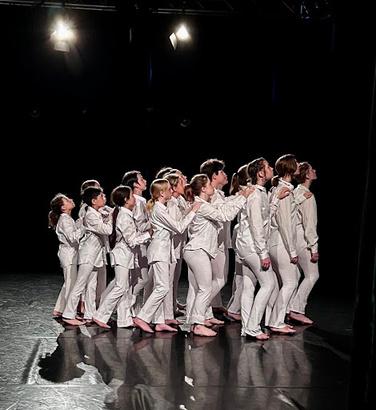
Whether it was a keynote speech, paper presentation, panel discussion, lecture-demonstration, movement workshop, or poster session, the 2024 daCi Conference “I-body, I-dance” offered engaging learning and networking opportunities.It was held July 7-12 in Ljubljana, the beautiful capital of Slovenia, with over 650 international attendees, including 300 youth participants. Among them were 83 adults and 44 young dancers from the United States.
Delicious “dance flavours” kicked off the activities in the mornings
Opening, closing, and youth performances were an exciting and entertaining way to close each evening. Performances were beautifully centered on the I-body, I-dance themes.
These special moments of participating in and viewing dance from around the globe provided a strong sense of community that carried throughout
the five, very full, days. Outgoing chair, Jeff Meiners of Australia, commented, “DaCi’s unique conference format was so evident. It brings theory and practice together with intercultural understanding and a stimulating international network of outward-looking dance education colleagues.”
To see high points of the conference in Ljubljana visit the Highlights page on the conference website. You can browse through the photos, videos and shared thoughts that give a flavor of the event.
Another important aspect of this vibrant conference was the signing of the daCi Ljubljana Declaration and UNESCO Forum. In February 2024, daCi was represented at the UNESCO Abu Dhabi Conference on Culture and Arts Education. Presentations, made with World Alliance for Arts Education colleagues, shared practices and innovative ideas, as well as strengthened a global alliance for culture and arts education to ensure that dance for young
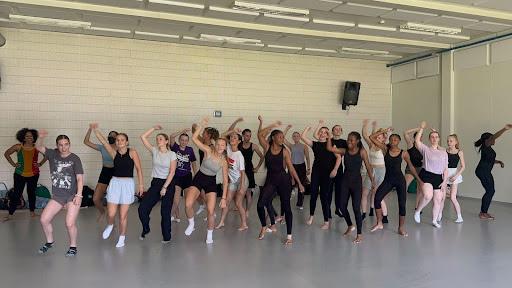
Children's Dance Theatre from Salt Lake City and other young dancers in class in Ljubljana.
people had a voice at this influential global event. Following the UNESCO Abu Dhabi conference, daCi members developed a daCi Ljubljana Declaration that along with the UNESCO Forum was signed on July 11. The declaration was signed by two Ministers from Slovenia, and daCi Chair Jeff Meiners and Chair-Elect and Co-conference Chair Vesna Geršak. It is not just a policy document, but a framework for arts and dance education that we can promote in the U.S. This declaration will provide a global framework for dance education and inform daCi's Strategic Plan for 2024-2027.








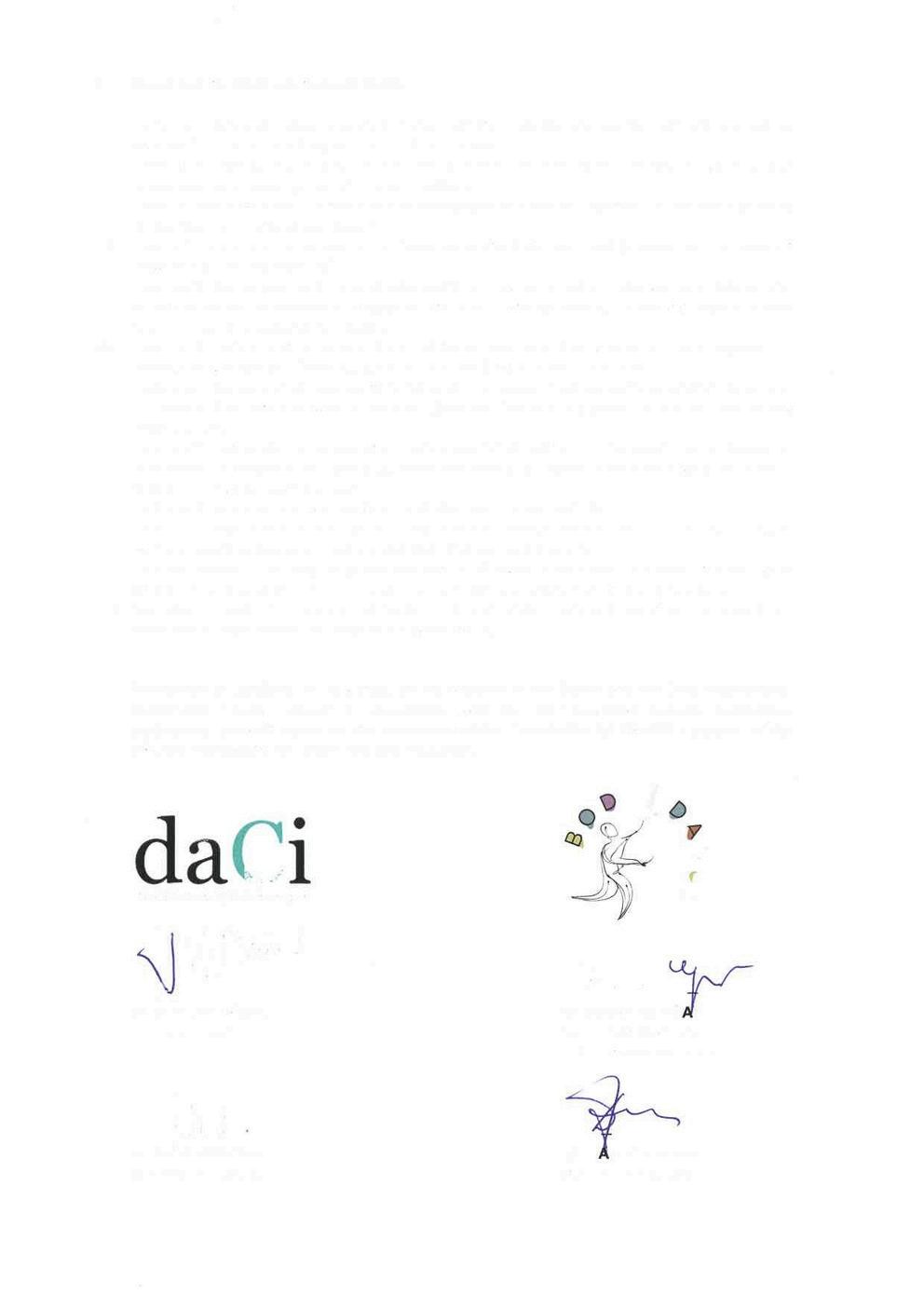

Enjoy these crowd-sourced resources from daCi members! Send your favorite recs to newsletter@daciusa.org
Way back in 2012 there was an exhibit of dance photos and other materials at the Library of Congress with this intriguing title: Dance and Democracy: Politics & Protest, World War I through the Cold War. It was co-curated by dance historian Elizabeth Aldrich and Victoria Phillips, an expert on the Cold War. The curators’ talk about the exhibit, richly illustrated with material from the exhibit, is still available here.
(skip to 2:42 to get to the good stuff!)
Mady Cantor, Philadelphia
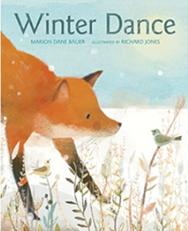

Winter Dance by Marion Dane Bauer: This book has a handful of movement words on each page. "Snow is coming, and it's time to get ready! The squirrel gathers nuts, the geese soar south, and the snowshoe hare puts on its new white coat." My PK-1st students enjoyed dancing the words of the pages, and making "little dances" (phrases or short-time dancing ) with the words.
Here’s a fantastic dance by choreographer Sergio Reis and members of Netherlands-based CDK Company to the music of Goyte Extraordinary ensemble dancing and film editing.
Chris Roberts, Springville, Utah
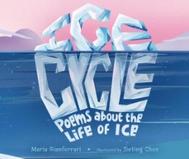
This is a great book for arts integration. (Trailer about the book here.)
Chara Huckins, Salt Lake City
Jeanne Traxler, Boston

The opening ceremony of the 2024 Paralympics in Paris was beautiful
Deborah Lipa-Ciotta, Buffalo
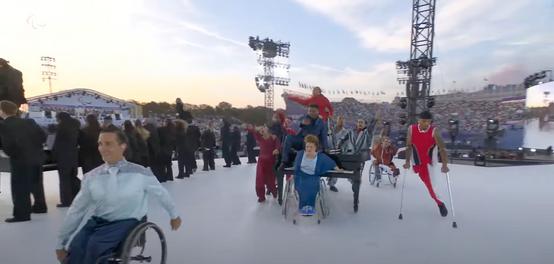
Your Brain on Art by Susan Magsamen and Ivy Ross, published in 2023, is an authoritative guide to neuroaesthetics. The book weaves a tapestry of breakthrough research, insights from multidisciplinary pioneers, and compelling stories from people who are using the arts to enhance their lives.
From the book jacket: “We’re on the verge of a cultural shift in which the arts can deliver potent, accessible, and proven solutions for the well-being of everyone. Magsamen and Ross offer compelling research that shows how engaging in an art project for as little as forty-five minutes reduces the stress hormone cortisol, no matter your skill level, and just one art experience per month can extend your life by ten years Doctors have even been prescribing museum visits to address loneliness, dementia, and many other physical and mental health concerns.”
Karen Campbell Kuebler, Towson, MD
(Ed. note: This resource is also mentioned in Cally Flox’s article in this issue –nice coincidence!)
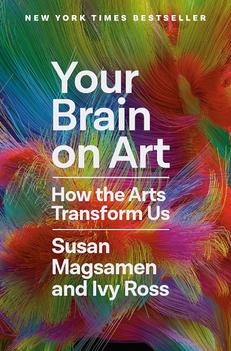
My college students have found this resource helpful: The British group Stopgap Dance Company is a world leader in inclusive dance, creating performances and educational opportunities that bring together dancers with and without disabilities Their work emphasizes creativity, collaboration, and breaking down barriers in the arts. For educators and dance professionals, Stopgap’s resources can be particularly helpful and can be used as a tool for inclusivity and expression for all children, regardless of ability.
Learn and Practice has a lot of helpful videos.
IRIS (Inclusive Dance Resource): This is a fantastic online resource with lesson plans, exercises, and tips for working with diverse learners, making it an invaluable tool for any dance educator looking to embrace inclusivity in the classroom.
Stopgap YouTube Channel Playlist: Stopgap shares videos of their performances and tutorials, offering valuable visual inspiration and practical tools for integrating inclusive dance into your teaching.
Stopgap Dance Blog: Regular articles about inclusive dance practices, teaching strategies, and insights from professional dancers and educators within the company.
Nicki Flinn-Culver, Holland, MI
If you are ever in a bad mood and in need of a lift, watch these six minutes of joy: https://www.youtube.com/watch?v=jOvmKHtbaUA.
Ed People went around the world and asked strangers for their favorite dance moves. Even the comments are uplifting!
Judith Nelson, Rhinebeck, NY
From a participant in Dancing Classrooms, age 11, Brooklyn, NY
Watch as the dancers sway
And tap
Falling in rhythm with each step.
Heel toe, heel toe
Holding each other close Arms aligned in a row.
Forward, back
Forward, back
It’s the way the dance goes
Follow your partner’s steps
Across the stage, Across the room
Looking only at each other
Heel toe, heel toe
Holding each other close Arms aligned in a row
Looking only at each other Your eyes, your face, your lips
A fast dance
But it feels so slow

5th graders in Dancing Classrooms.
On the first day, we were split into classes with students from all over the world. My teacher was super relaxed so we got to spend time bonding with new friends. Since we had this class every day, we got to really know them and talk about our experiences in Ljubljana On the last day, all sorts of people came up to me to trade items for something in return I now have trinkets from all over the world and my handcrafted bracelets are being worn all over the world We exchanged phone numbers and stories We walked and took the bus a lot but it was fun because of the people we were with. We got to eat at all sorts of delicious places as well as attending cool sightseeing places in the evenings after dance class. I especially loved our river boat ride and eating good gelato. I also really loved the traditional Slovenian noodle soup with beef broth. It was a week I’ll never forget!
–Isla, age 15, Children’s Dance Theatre, Utah
DaCi 2024 was my first conference, bookended by two incredible ceremonies: on one side, an exhilarating concert put on by local dancers to set the mood for the week ahead, and, on the other, a lovely recap of our time together –alongside news of what’s to come in 2027! However, meeting peers from places I never thought possible was undoubtedly the most valuable experience.
Comparing our lifestyles led to many fascinating conversations -- and ideas to bring back home. For example, a class on dancing in our environment lead to exploring new ways of interacting with dancers and the natural world, but also introduced me to several attendees from Switzerland -- all of whom had never met before their trip but found new connections through the conference.
And, for my part, I found their distinct regional flairs to be quite educating as I got a more complex look at the variety in Switzerland alone! The incredible breadth of people daCi brings together under a common purpose is commendable, and I look forwards to coming back soon!
–Foss, age 16, Utah
“daCi was an incredible experience. Meeting people from around the world and becoming closer with the people I dance with the best. It was such a meaningful experience to be able to express myself and learn other dance cultures.”
–Zoë, age 12, Kaleidoscope, Seattle
“To me daCi means community and learning. I fostered so many meaningful connections in Ljubljana. It really changed my view of dance around the world.”
–Mycah, age 15, Seattle
“It was great to get to know the people from all the different countries who I never would have gotten to know if it wasn’t for daCi. The dance classes were challenging and fun and I loved trying lots of styles. It was cool to see all the other young dance companies perform. The whole thing was amazing!”
–Calder, age 11, Seattle
“I liked all the different kinds of dance we got to experience. Each teacher had their own style and it was fun to try all of the classes. I loved dancing with kids from all over the world and I was inspired by their dancing.”
–Sofia, age 9, Seattle
Dance Awareness: No Child Exploited (better known as DA:NCE) is growing.
We’re excited to announce 2 new initiatives:
Do you know a dance studio or dance organization that is steadfast in their commitment to use age-appropriate choreography, costumes and music in children’s dance classes? If so, we need you to nominate them for our Healthy DA:NCE Directory! This database highlights those studios and organizations that are committed to teaching healthy, not hypersexualized children’s dance. We are hopeful that this will become not only a wonderful resource for concerned parents and adults, but also a place to celebrate all of the dance studios/organizations dedicated to protecting children in dance. Please nominate a dance organization/studio today: https://www.danceawareness.com/find-asafe-studio/
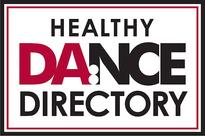

DA:NCE Coalition - Join Us
Do you want the opportunity to unite with others who are passionate about protecting children in dance? Join the DA:NCE Coalition! This volunteer group will be made up of individuals from all walks of life - dance industry experts, studio owners, dance instructors, concerned parents and caring adults - all with one goal: support each other in ending hypersexualized children's dance in adult costumes, choreography and music. This group uses roadmap technology to allow for your preferences to move forward with as much or as little participation as time allows. The bottom line? We want to unite our voices and give this issue a national voice! https://www.danceawareness.com/coalition/
15th daCi International conference proceedings available: “Dancing into Communities” daCi Day of Dance coming up in NY in the spring!
The proceedings of the Dancing into Communities 2022 are published on yorkSpace. The keynotes, papers and reports provide a snapshot of the virtual conference Dancing into Communities in 2022 embracing the theme from a range of diverse perspectives. The collection begins with two inspiring keynotes, one from Luca “Lazylegz” Patuelli (Canada) and the second from Ann Kipling Brown (Canada) both presented in video format. Papers and reports contribute a range of interesting perspectives in relation to this theme. The 2022 Proceedings makes an important contribution to an everincreasing dance scholarship and dance education practice across the generations and time span of daCi For information on how to access it, write to sue cheesman@waikato ac nz
–Sue Cheesman, Chair, Conference proceedings
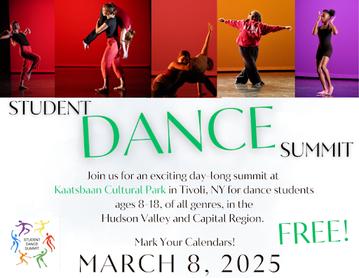
For further details, contact studentdancesummit@gmail.com

Dancing Classrooms is a leading dance education partner for NYCarea schools, providing more instruction than any other organization in New York City. Last year, in conjunction with our network partners across the U.S., we taught nearly 23,000 students. Through the joyful art and practice of social dances, Dancing Classrooms cultivates engaged learners, collaborative leaders, and inclusive spaces. We work to create a more equitable, just, and joyful world by dancing together. We believe our mission aligns beautifully with daCi’s commitment to promoting cultural understanding and respect among young people.
You may know us from the documentaries Mad Hot Ballroom (2005), and Dancing in Jaffa (2014). These films highlight our educational philosophy, inspiring educators to bring our program to their communities. We invite you to join us in this mission. We hold 5 day intensive training sessions in summer and fall. More about that here.
Our programs teach much more than dance steps; they are social-emotional learning experiences grounded in culturally rich, collaborative social dances. Since 1994, we've shown students that dancing can unleash joy and promote wellness. Research shows that Dancing Classrooms fosters collaboration, builds confidence, and enhances respect among peers Our in-school and growing out-of-school programs introduce K-12 students to dances like merengue, salsa, tango, swing, and waltz, many recognized by UNESCO as part of our intangible cultural heritage of humanity
“After the students had dance class, they returned to the classroom in good spirits and energized. It definitely motivated them.” – Partnering Classroom Teacher
Take the next step train with us and bring the joy of Dancing Classrooms to your community.
Learn more here.
Videos:
Welcome to the Joy and Connection of Dancing Classrooms: https://vimeo.com/885805343
Hear from a Classroom Teacher: https://vimeo.com/893756250
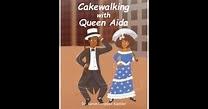
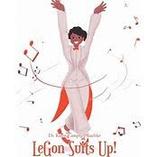
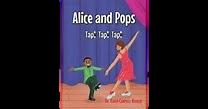
daCi Member Karen Kuebler has published three non-fiction children’s books about people in dance history.
Her illustrated and lively books feature Alice Whitman and her son Pops Whitman, Aida Overton Walker, and Jeni LeGon
All are available at Barnes & Noble and Amazon. Further details and reviews at karencampbellkuebler.com.
Canadian daCi member Tanya Berg is excited to share her upcoming publication discussing the embodied learning of arts integration in K-12 education.
Arts-Based Pedagogies: Integrating Culturally Relevant Creative Processes in K12 Education explores the transformative potential of creative learning through the implementation of arts integration in K-12 classrooms. Contributors share real-world experiences of bringing the arts into their curriculum and share success stories of using interdisciplinary approaches to build vibrant, student-centered environments that enrich student experience without sacrificing academic rigor.
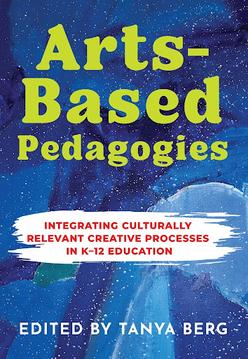

Job Posting: Towson University invites applications for a tenure-track, 9-month Assistant Professor in the Department of Dance beginning August 2025.
Towson University is seeking an Assistant Professor with a depth of technical practice and pedagogical skills in classical and contemporary ballet and experience teaching advanced, preprofessional dance majors. Additional experience in dance education, dance history, dance science, dance writing/advance writing, or dance and film are desired. We encourage applicants with experience in diverse cultural and global perspectives and interest in innovation, collaboration and emerging trends in dance performance, choreography, and education Experience in choreography and a committed practice to exploring and advancing these processes through research to support shifting constructs in 21st-century dance Demonstrated abilities in teaching in higher education, and a record of scholarship (creative and/or written).Terminal degree required.
https://towson.taleo.net/careersection/fac ex/jobdetail.ftl?job=240000PE